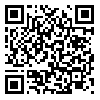Sun, Dec 21, 2025
[Archive]
Volume 16, Issue 4 (Autumn 2025)
Caspian J Intern Med 2025, 16(4): 755-766 |
Back to browse issues page
Download citation:
BibTeX | RIS | EndNote | Medlars | ProCite | Reference Manager | RefWorks
Send citation to:



BibTeX | RIS | EndNote | Medlars | ProCite | Reference Manager | RefWorks
Send citation to:
Kareem H A, Ghadi H H. Reshape Memory T Cell Landscape in CML Patients' Blood by Tyrosine Kinase Inhibitors. Caspian J Intern Med 2025; 16 (4) :755-766
URL: http://caspjim.com/article-1-4595-en.html
URL: http://caspjim.com/article-1-4595-en.html
Collage of Dentistry, University of Mustansiriyah, Baghdad, Iraq , Haneen.ali73@yahoo.com
Abstract: (872 Views)
Background: CML, a blood cancer characterized by excessive myeloid cell proliferation, stems from the BCR-ABL1 gene fusion. This research aimed to uncover why leukemic stem cells resist treatment and explore innovative immune-based therapies to improve patient outcomes.
Methods: This study investigated the immunologic phenotypes (CD8, CD27, CD197, and CD45RA) of T cell subsets (TN, TCM, TEM, and TEF) in the peripheral blood of chronic myeloid leukemia patients in the chronic phase who achieved a complete molecular response to tyrosine kinase inhibitors. The treatment-free remission (TFR) patients were compared to age- and gender-matched healthy volunteers using multicolor flow cytometry for analysis.
Results: Flow cytometry analysis unveiled notable shifts in CD8+ T cell subsets. CML-CP patients showed a marked decrease in central memory T cells (TCM), dropping to 7.2% of the CD8+ population. Conversely, these patients exhibited substantial increases in effector memory T (TEM) and effector T (TEF) cells, rising to 37.6% and 24.4% respectively. The most statistically significant change occurred in the CD8+ TEF subset. CML-CP patients displayed a 24.4% presence of these cells, compared to only 15.7% in control groups. These findings suggest a distinct immunological profile in CML-CP, potentially impacting disease progression and treatment strategies.
Conclusion: Tyrosine kinase inhibitors restore the distribution of memory T cells in patients with chronic myeloid leukemia (CML), but T cell exhaustion remains an issue. This situation highlights the need for alternative activation strategies to enhance immunity.
Methods: This study investigated the immunologic phenotypes (CD8, CD27, CD197, and CD45RA) of T cell subsets (TN, TCM, TEM, and TEF) in the peripheral blood of chronic myeloid leukemia patients in the chronic phase who achieved a complete molecular response to tyrosine kinase inhibitors. The treatment-free remission (TFR) patients were compared to age- and gender-matched healthy volunteers using multicolor flow cytometry for analysis.
Results: Flow cytometry analysis unveiled notable shifts in CD8+ T cell subsets. CML-CP patients showed a marked decrease in central memory T cells (TCM), dropping to 7.2% of the CD8+ population. Conversely, these patients exhibited substantial increases in effector memory T (TEM) and effector T (TEF) cells, rising to 37.6% and 24.4% respectively. The most statistically significant change occurred in the CD8+ TEF subset. CML-CP patients displayed a 24.4% presence of these cells, compared to only 15.7% in control groups. These findings suggest a distinct immunological profile in CML-CP, potentially impacting disease progression and treatment strategies.
Conclusion: Tyrosine kinase inhibitors restore the distribution of memory T cells in patients with chronic myeloid leukemia (CML), but T cell exhaustion remains an issue. This situation highlights the need for alternative activation strategies to enhance immunity.
Keywords: T cell subsets, CML, peripheral blood microenvironment, Flow cytometry, tyrosine kinase inhibitor
Policy Brief: Original Article |
Subject:
Oncology
Received: 2024/11/22 | Accepted: 2025/01/20 | Published: 2025/09/18
Received: 2024/11/22 | Accepted: 2025/01/20 | Published: 2025/09/18
Send email to the article author
| Rights and permissions | |
 |
This work is licensed under a Creative Commons Attribution-NonCommercial 4.0 International License. |







